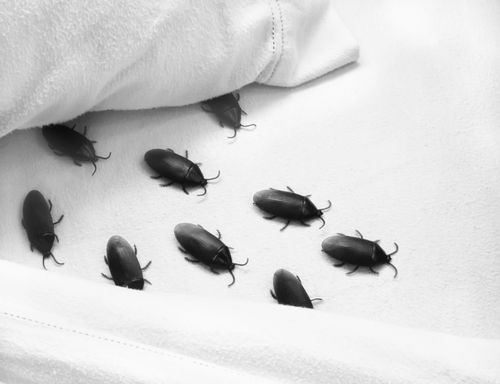Dust Mites Call Your Pillow Home, Too: When To Replace Your Pillow To Avoid Bacteria, Fungi, And Mold

Providing you with comfort and neck support, a pillow is essential to a good night’s sleep, nap, or long plane ride. Despite how comfortable and deceivingly clean your pillow might be, it’s home to thousands, if not millions, of critters and debris.
Dead skin cells, dust mites, bacteria, fungi, and mold call your pillow home. Dust mites are in the spider family and feed on flakes of human skin that reside in the crevices of pillows and in carpets, upholstery, draperies, and other dusty areas. Dirt and oil from your skin also get trapped in the pillow. Researchers have even suggested that up to a third of your pillow’s weight could be made up of bugs, dead skin, dust mites, and their faeces.
Thankfully, dust mites don’t spread any kind of disease, but they do pose allergy and asthmatic risks. Roughly 20 percent of people have allergies, and of those who do, around two-thirds may be allergic to the types of dust mites found indoors, The Huffington Post reported. To help reduce your allergic symptoms, including sneezing, runny nose, and itchy eyes, use an airtight cover for your mattress and pillows.
How often do you replace your pillow? While the life span of a pillow is a debated topic, the average replacement time has been suggested to be around two years. However, Robert Oexman, DC, director of the Sleep to Live Institute says pillows should probably be replaced every six months. “People talk about how nasty a mattress gets,” said Oexman, but pillows are more frequently forgotten.
In addition to replacing your pillow, washing it can help to reduce the buildup of unwanted critters. When washing your pillows, put in a couple at a time so the washer stays balanced. Wash with hot water and mild detergent. Hot water will kill dust mites, without the need for bleach or other chemicals. Dry the pillows on a low setting and put a couple clean tennis balls, wrapped in white socks, in the dryer to ensure your pillow remains fluffy without transferring dyes. Before you take the pillow out of the dryer, make sure it’s completely dry to avoid creating a moist breeding ground perfect for mold. Unfortunately, you can’t wash most foam pillows, but some may have instructions for hand washing. Instead, you can vacuum both sides to remove unwanted dust.
Published by Medicaldaily.com



























